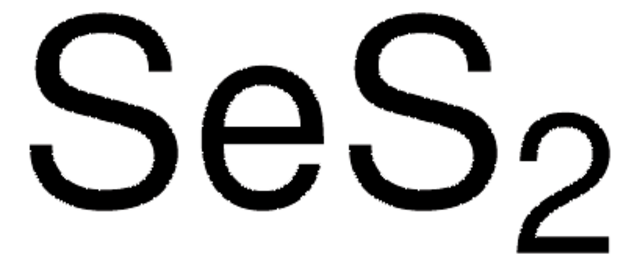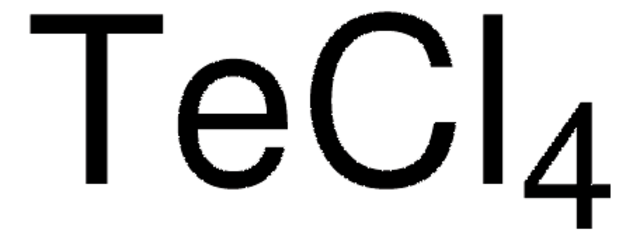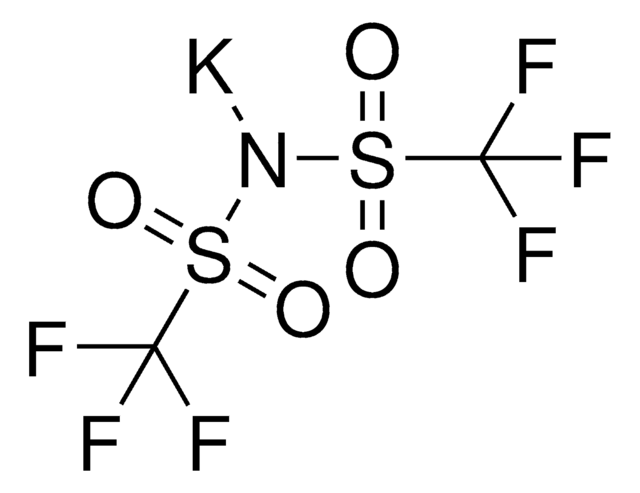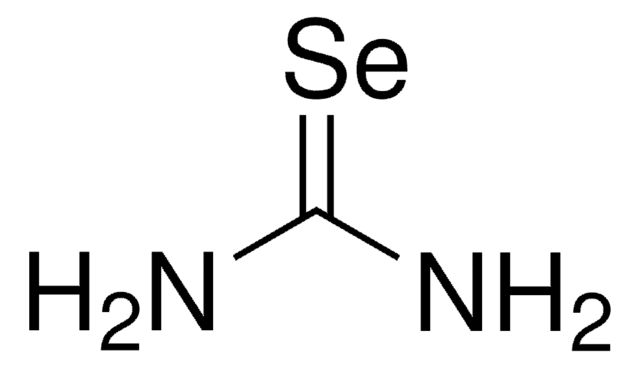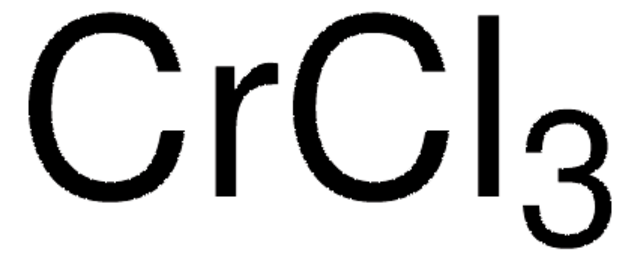323527
Selenium tetrachloride
Synonym(s):
Selenium (Ⅳ) chloride
About This Item
Recommended Products
grade
for analytical purposes
Quality Level
form
powder or crystals
concentration
35.0-36.5% Se (after reduction with sulphite, gravimetric)
density
2.6 g/mL at 25 °C (lit.)
SMILES string
Cl[Se](Cl)(Cl)Cl
InChI
1S/Cl4Se/c1-5(2,3)4
InChI key
LNBXMNQCXXEHFT-UHFFFAOYSA-N
Related Categories
Signal Word
Danger
Hazard Statements
Precautionary Statements
Hazard Classifications
Acute Tox. 3 Inhalation - Acute Tox. 3 Oral - Aquatic Acute 1 - Aquatic Chronic 1 - STOT RE 2
Storage Class Code
6.1C - Combustible acute toxic Cat.3 / toxic compounds or compounds which causing chronic effects
WGK
WGK 3
Flash Point(F)
Not applicable
Flash Point(C)
Not applicable
Personal Protective Equipment
Choose from one of the most recent versions:
Already Own This Product?
Find documentation for the products that you have recently purchased in the Document Library.
Customers Also Viewed
Global Trade Item Number
| SKU | GTIN |
|---|---|
| 323527-10G | 4061826708743 |
| 323527-50G | 4061826708750 |
Our team of scientists has experience in all areas of research including Life Science, Material Science, Chemical Synthesis, Chromatography, Analytical and many others.
Contact Technical Service